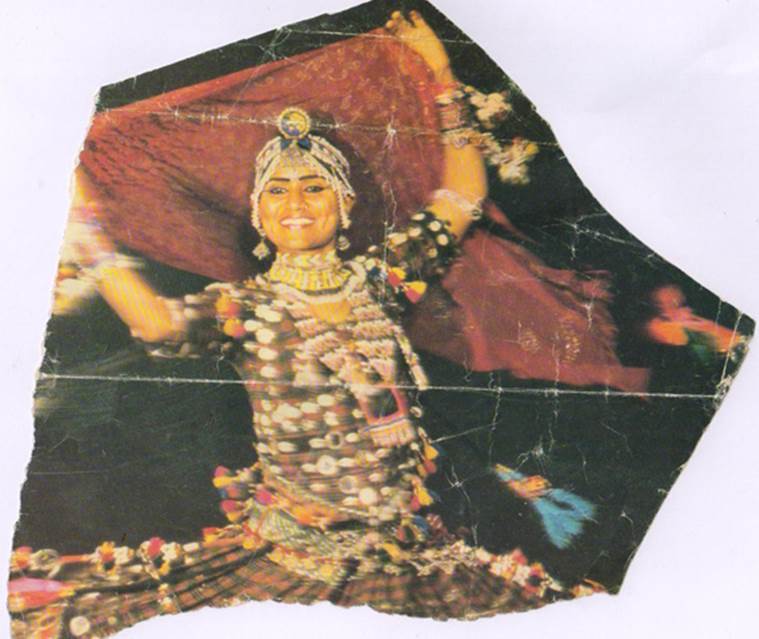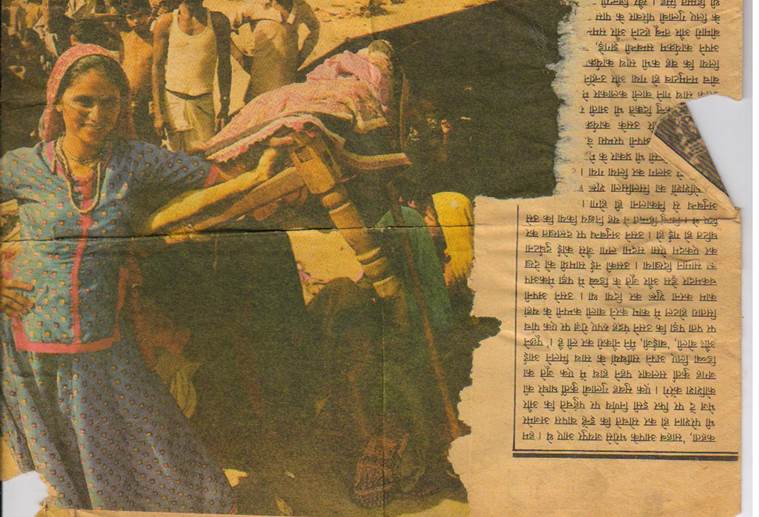- India
- International
Padma Shri recipient Gulabo: Sapera dance has a beginning but no end, it just goes on and on
At birth, Gulabi suffered the same fate as the rest of the girls born in her community — the elders buried her alive, without even cutting the umbilical cord attached to her belly. Had her aunt not dug the child out of her grave at midnight, the day of Dhanteras in November 1972, the world […]
 Kalbelia dancer Gulabo in Jaipur on Thursday. (Express photo by Rohit Jain Paras)
Kalbelia dancer Gulabo in Jaipur on Thursday. (Express photo by Rohit Jain Paras)
At birth, Gulabi suffered the same fate as the rest of the girls born in her community — the elders buried her alive, without even cutting the umbilical cord attached to her belly. Had her aunt not dug the child out of her grave at midnight, the day of Dhanteras in November 1972, the world would not have known Sapera dance.
Gulabi Sapera, creator of Rajasthan’s celebrated dance form, was awarded the Padma Shri on Tuesday — the first one from her community to be bestowed the honour and the only woman from Rajasthan to figure in the nation’s esteemed civilian awards in the past five years.
“I feel more responsible now. The art for which I have been awarded needs to be preserved and promoted,” says the 44-year-old, at her modest residence in a narrow lane of Jaipur’s Shastri Nagar.
 An old picture of Gulabo performing Sapera dance.
An old picture of Gulabo performing Sapera dance.
Named Dhanvanti, as she was born on Dhanteras, she fell seriously ill when she was 1 and was taken to a peer who placed a rose on her chest. “I had almost died. So when I recovered with the blessing of the rose, my father said ‘Dhanvanti is dead now and Gulabi is born’,” she said.
The name Gulabo, by which she is popularly known, is the result of a typo in Dharmayug magazine, she says.

Reaclling her childhood, Gulabi said that the Sapera community, traditionally engaged in catching and “charming” serpents, didn’t want to be burdened with looking after a girl child in their jungle encampments, and would kill girls as soon as they were born. “But my father didn’t like the practice. Ours was one of the very few homes that had three girls, all born before me. I was the seventh child. The elders managed to bury me since my father was not home the day I was born.”
“For the next couple of years, my father would carry me around in one of his straw snake baskets, fearing that I would be killed if left at home. He would also feed me leftover milk meant for snakes,” he told her, she says.
Though dancing professionally was unheard of in the Sapera community at that time, even as a two-year-old Gulabo would sway along with her father’s serpents on the tunes of the been.
However, her journey as a dancer began in earnest when in 1985, Rajasthan tourism department officials Himmat Singh and Tripti Pandey (sister of Ila Arun) spotted her with her friends at the Pushkar fair. The duo were charmed by “this little girl who moves as if there were no bones in her body”.
Later that day, the officials convinced her father to allow 13-year-old Gulabi to dance on the stage for the first time. “I had only danced on bare ground at Holi till then and those watching would throw coins at us. This audience did not throw coins, but applauded and appreciated my art. I felt like I was dancing in a temple,” she recalls.
 Newspaper clipping of a report on Gulabi.
Newspaper clipping of a report on Gulabi.
The now-famous wild, whirling dance moves synonymous with Sapera dance came to her from watching snakes move about to her father’s been. Her trademark black dress, adorned with tiny mirror embellishments and cotton thread braids, was inspired by the screen. At seven watching the film ‘Asha’, Gulabi was smitten by the dress worn by Reena Roy in the popular song ‘Sheesha ho ya dil ho’.
“I knew immediately that I wanted that dress and had it stitched. I wore it when I danced on stage and since then it has become my sceond skin,” she says.
After the performance at Pushkar, Gulabo knew she had to be a dancer. “My life was meant to be different. I couldn’t stay in the village and continue to beg for alms,” she says.
Later that same year, Gulabo was noticed by art curator and scenographer Rajiv Sethi in Delhi, who drew the then Prime Minister Rajiv Gandhi’s attention to her. That led to the young danseuse travelling to Washington to perform at the ‘Festival of India’.
When she returned, the same community elders who had buried her alive and then boycotted her family, welcomed her back and elected her the president of the caste association.
“I accepted it only after making them promise that they would stop killing their daughters. They agreed, saying that they wanted a Gulabo to be born in their homes too,” she says.
Having performed her Sapera dance in over “165 countries with the exception of Pakistan”, Gulabo has lately been collaborating with French composer Thierry ‘Titi’ Robin. The duo released a 14-track album ‘Rakhi’ in 2002, featuring a fusion of Robin’s mediterranean music with Rajasthan’s rusty gypsy sounds performed by Gulabo.
Says Gulabo, “I don’t like the term Kalbeliya dance. I call it Sapera dance because it was inspired by movements of snakes. Kalbeliya is a negative term – it means friends of death. As saperas would catch and live with snakes, and snakes were equated with ‘kaal’ or death, people called them Kalbeliyas.”

At 44, despite being a grandmother, Gulabo remains a tireless dancer. “You are only as old as you feel. I can still dance for hours. In fact, toursim officials always worry that I won’t stop dancing and it will ruin their schedule. When I start dancing, I feel possessed by some power and it takes me higher and higher”. The longest she has danced is for eight hours straight on the sand dunes of Jaisalmer.
“I don’t feel any competition from younger dancers. I created this form and I love it when I see young girls dancing to Sapera tunes. There is no college festival in Rajasthan where the dance is not performed. Gulabo will always live in these college performances,” she says.
But she doesn’t feel the need to get a copyright for her dance. “I believe in keeping it free, because I don’t own it. It was given to me by God to spread it. Sapera dance has no calculated steps, like Kathak. etc. It is wild and free. It has a beginning but no end. It just goes on and on and on,” says Gulabo.
Apr 26: Latest News
- 01
- 02
- 03
- 04
- 05







































